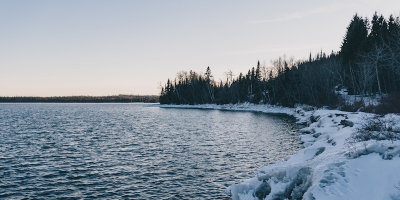
The largest lake in North America is Lake Superior. The lake’s name did not initially refer to its enormous size, but was described as “la lac superior” by early French explorers in reference to the fact that it was the only lake upstream from the other Great Lakes of North America. However, in the 1760s the British anglicized the lake’s name to Lake Superior in reference to its massive size. Lake Superior is the largest freshwater lake in the world and covers a total area of 82,100 square miles.
Like all of the Great Lakes, Lake Superior is prone to lake effect snow, but the weather is generally moderate, with warmer temperatures than inland throughout the year. Winter temperatures around the lake rarely fall below minus 30 F (minus 34 C), well above inland temperatures. June and July are calm months, while October and November are prone to storms.
During most winters, the lake is 40 to 95 percent covered with ice, although it rarely completely freezes. The last time Lake Superior froze over was in 2014. Overall, the Great Lakes reached a 91 percent ice cover that year, which is the most the lakes have frozen since 1979. Freezing of the lakes is monitored because it affects hydropower generation, commercial shipping, the fishing industry and more, according to the Office of Oceanic and Atmospheric Research.
Picture Credit : Google

